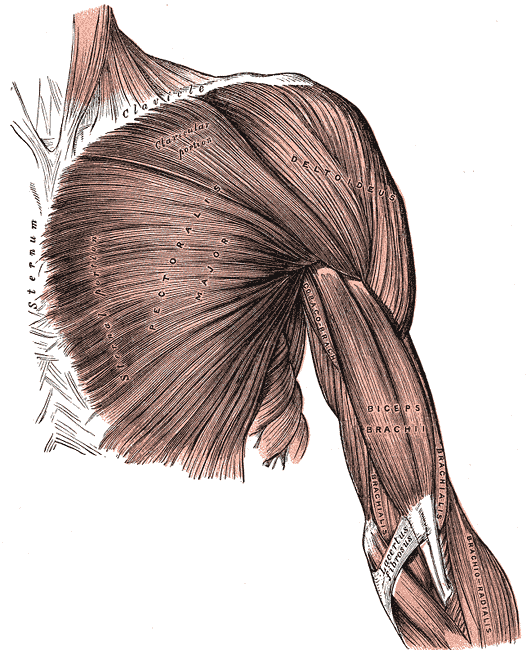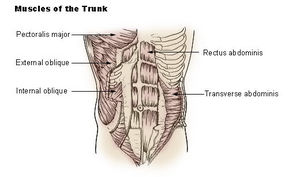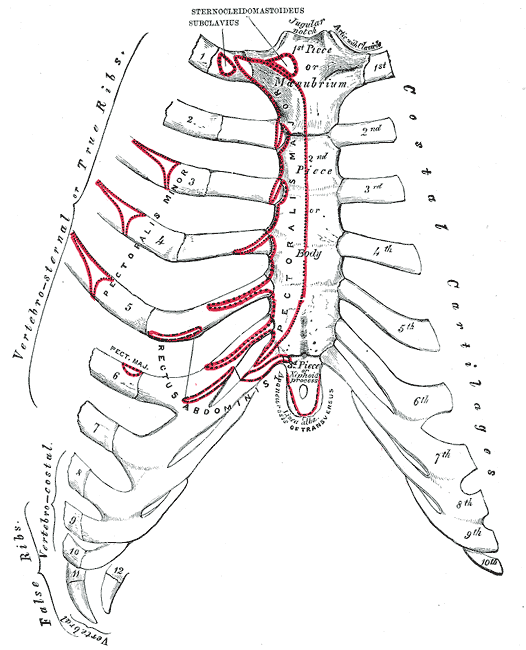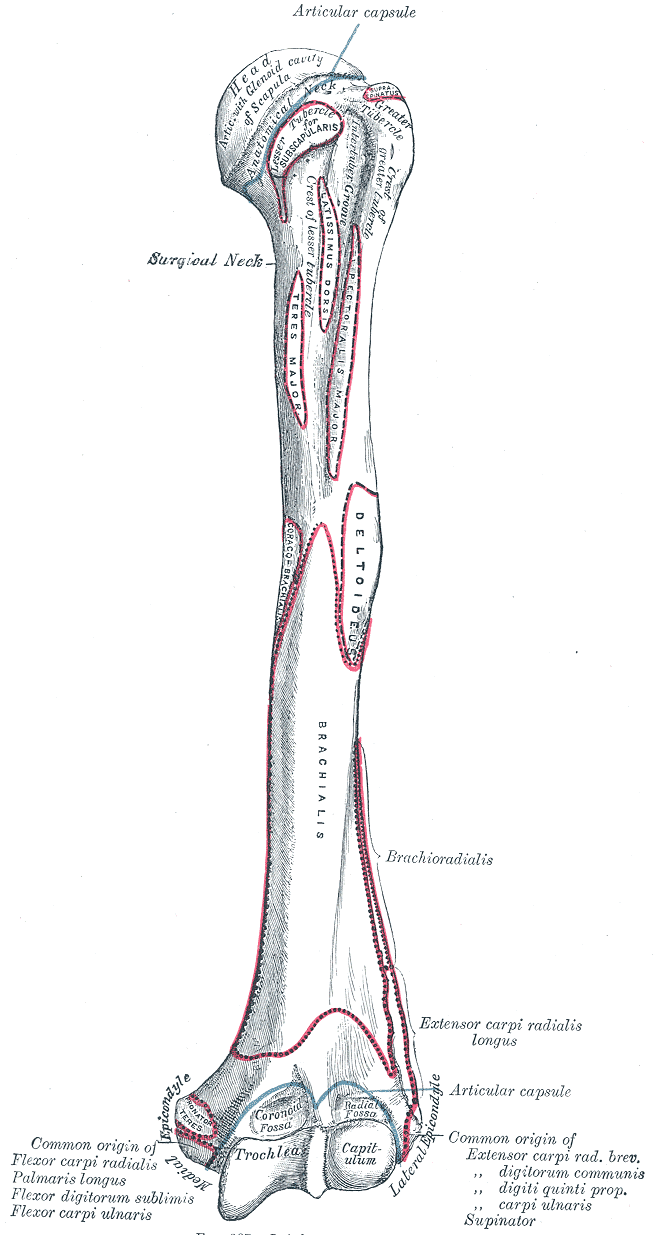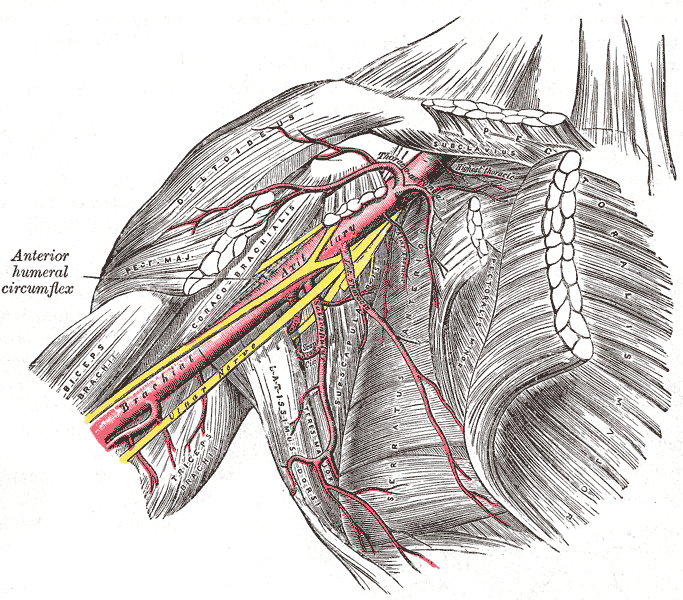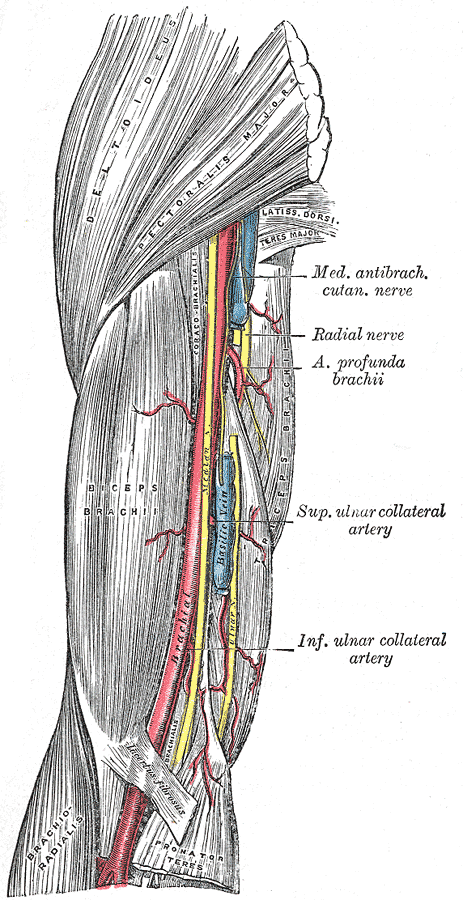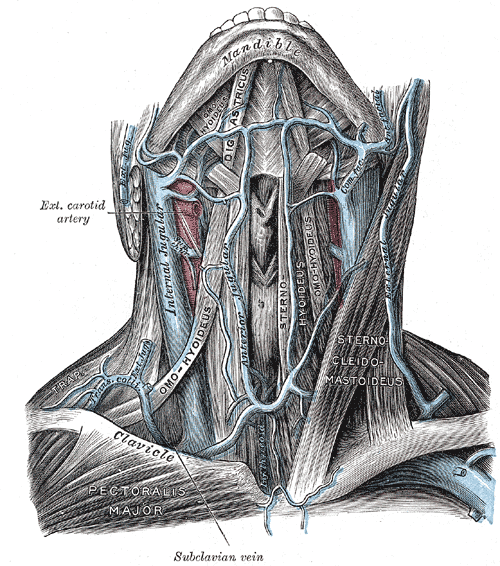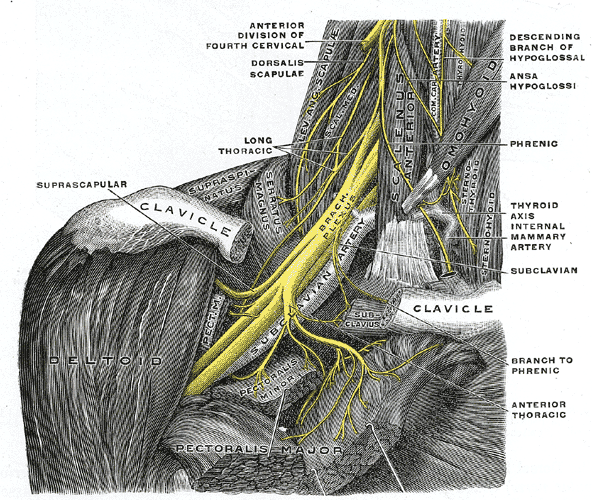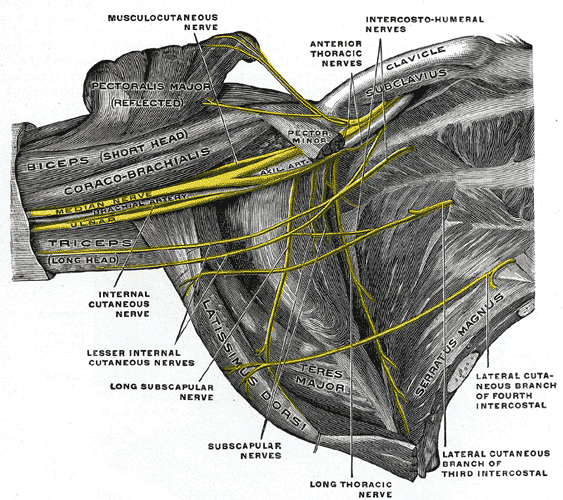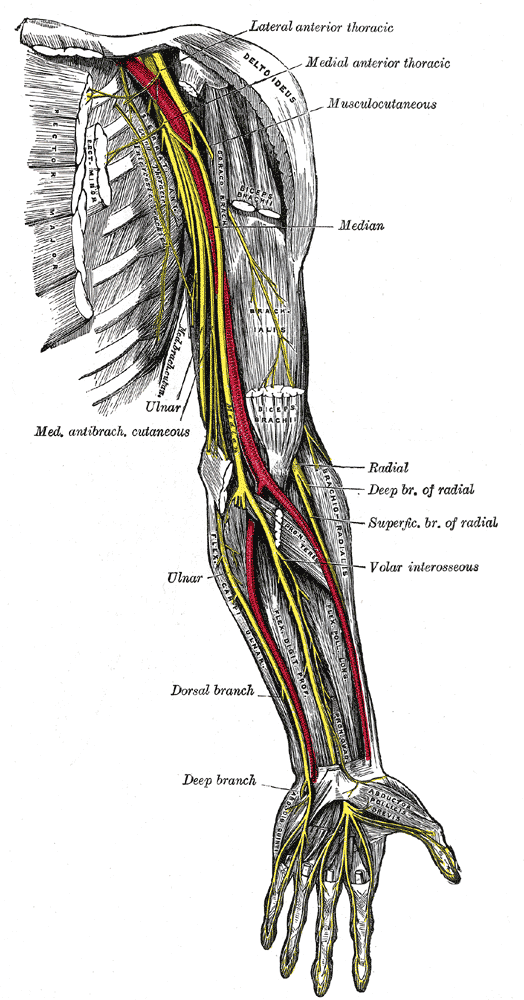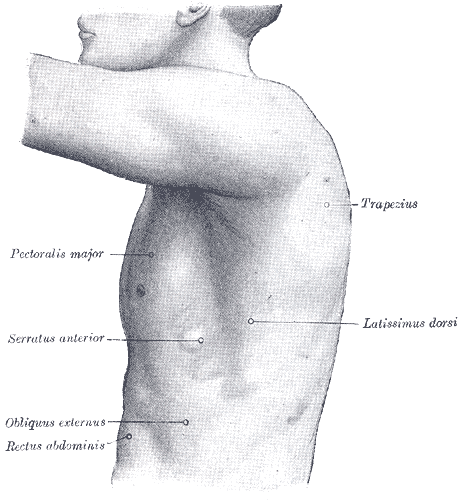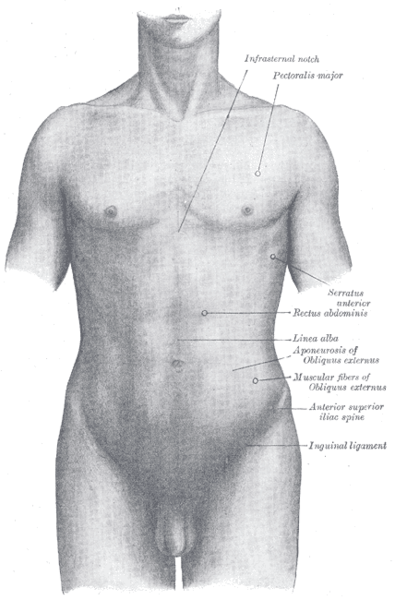Pectoralis major muscle
The Pectoralis major is a thick, fan-shaped muscle, situated at the upper front (anterior) of the chest wall. It makes up the bulk of the chest muscles in the male and lies under the breast in the female.
Origin and insertion
It arises from the anterior surface of the sternal half of the clavicle; from breadth of the half of the anterior surface of the sternum, as low down as the attachment of the cartilage of the sixth or seventh rib; from the cartilages of all the true ribs, with the exception, frequently, of the first or seventh and from the aponeurosis of the abdominal external oblique muscle.
From this extensive origin the fibers converge toward their insertion; those arising from the clavicle pass obliquely downward and outwards (laterally), and are usually separated from the rest by a slight interval; those from the lower part of the sternum, and the cartilages of the lower true ribs, run upward and laterally, while the middle fibers pass horizontally.
They all flat in an end tendon, about 5 cm. in breadth, which is inserted into the crest of the greater tubercle of the humerus.
Laminae
This tendon consists of two laminae, placed one in front of the other, and usually blended together below.
- The anterior lamina, which is thicker, receives the clavicular and the uppermost sternal fibers. They are inserted in the same order as that in which they arise: the most lateral of the clavicular fibers are inserted at the upper part of the anterior lamina; the uppermost sternal fibers pass down to the lower part of the lamina which extends as low as the tendon of the Deltoid and joins with it.
- The posterior lamina of the tendon receives the attachment of the greater part of the sternal portion and the deep fibers, i. e., those from the costal cartilages.
These deep fibers, and particularly those from the lower costal cartilages, ascend the higher, turning backward successively behind the superficial and upper ones, so that the tendon appears to be twisted.
The posterior lamina reaches higher on the humerus than the anterior one, and from it an expansion is given off which covers the intertubercular groove of the humerus and blends with the capsule of the shoulder-joint.
From the deepest fibers of this lamina at its insertion an expansion is given off which lines the intertubercular groove, while from the lower border of the tendon a third expansion passes downward to the fascia of the arm.
Variations
The more frequent variations include greater or less extent of attachment to the ribs and sternum, varying size of the abdominal part or its absence, greater or less extent of separation of sternocostal and clavicular parts, fusion of clavicular part with deltoid, and decussation in front of the sternum.
Deficiency or absence of the sternocostal part is not uncommon.
Absence of the clavicular part is less frequent.
Rarely, the whole muscle is missing. This may accompany absence of the breast in females. (See Poland Syndrome).
Training
In addition to being one of the primary pushing muscles of the upper body, the pectoral is a frequent target for bodybuilding. The flat, barbell bench press is the most popular exercise. The pushup is a popular bodyweight exercise targeting the pectoralis major. The muscle is generally worked in compound movements that involve pushing, where the triceps brachii and deltoid muscles are also activated to varying degrees. Exercises that bring the arms together (such as pectoral flies) also work the pectorals, somewhat more selectively.
Flat and declining movements generally work the sternal fibers (often called the "lower" or "inner pecs") while inclining movements generally work the clavicular fibers ("upper pecs.") The opposite is true for pushups, where declining (chest below legs) pushups use more clavicular fibers; they are also more difficult than flat or incline pushups due to the increased responsibility of the (smaller) deltoids and the weaker line of pull for pectoralis.
The following exercises target and work "the pecs:"
- Bench press, with various bench angles (flat, incline, and decline)
- Press up
- Dips
Isolation exercises include:
- Flyes or Flies
- Cable Crossovers
- "Pec Deck" machines
Additional images
-
Superficial muscles of the chest and front of the arm.
-
Muscles of the trunk
-
Anterior surface of sternum and costal cartilages.
-
Left clavicle. Superior surface.
-
Left clavicle. Inferior surface.
-
Left humerus. Anterior view.
-
The axillary artery and its branches.
-
The brachial artery.
-
The veins of the neck, viewed from in front.
-
The right brachial plexus with its short branches, viewed from in front.
-
The right brachial plexus (infraclavicular portion) in the axillary fossa; viewed from below and in front.
-
Nerves of the left upper extremity.
-
The left side of the thorax.
-
Surface anatomy of the front of the thorax and abdomen.
External links
Template:Muscles of upper limb
de:Musculus pectoralis major id:Otot pectoralis major he:שריר החזה הגדול nl:Musculus pectoralis major fi:Rintalihas sv:Stora bröstmuskeln
